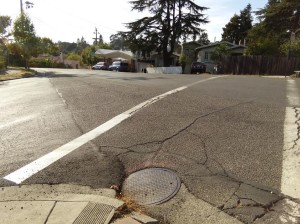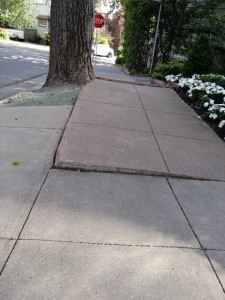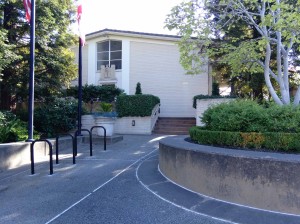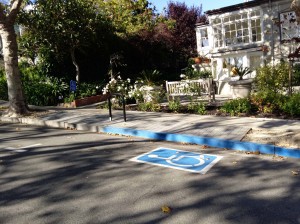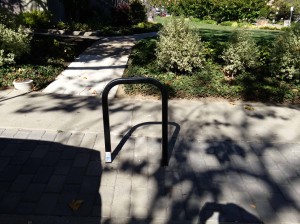League of Women Voters View Recycling and Compost Operations
On a recent tour of Republic Services’ recycling and compost operations in the city of Richmond, members of the Piedmont League of Women Voters got a close-up look at the massive and complex business of sorting, storing and transporting our discarded cans, bottles and paper and composting our food and garden waste. The group also learned first-hand what should and should not go in recycling and green-waste bins.
Peter Nuti, a 30-year Republic Services employee and currently Municipal Relations and Contract Manager, led the tour, patiently answering dozens of questions. Republic Services acquired Piedmont’s former contracted waste collection firm, Richmond Sanitary Services, in 2001 and has had a waste collection contract with Piedmont since 2001.
The company, headquartered in Phoenix, is the second largest waste collection firm in the U.S. First on the tour was a cavernous, high-ceiling, aluminum warehouse, where all curbside recycling trucks unload their daily collections. The loads are metered and transferred to a conveyer belt that screens and successively drops out garbage, paper, bottles and cans. Cardboard and non-recyclables are pulled out by hand. Larger plastic containers, those labeled PET #1 and #2, go to a different sorter and ultimately are sent to a processor to be converted into a raw material. The plastic is shredded, washed and made into products, such as carpet fibers. The final separator screens and breaks up glass, and a “waterfall” sucks up the smallest pieces of debris. Mountains of paper are stacked in the warehouse by forklift operators, packed onto pallets for transport to the port of Oakland and from there most likely shipped to Asia to be remade into new paper products.
According to Peter Nuti, there are strong markets for newspapers, cardboard and PET #1 and #2 plastics. “We have to close the loop,” he said, “by buying recycled products and products with less packaging.”
From the warehouse, Mike Davenport, President, Davenport Securities whose company provides security for both Republic Services’ operational sites, drove League members to the composting area, located high above the Bay, atop a 356-acre, capped landfill. Surrounded by 2-story hills of maturing compost, Nuti explained the process of transforming food and green waste into reusable compost. Through various stages, the mountains of waste are separated and ground into small pieces of similar size and texture.
In one critical stage, pieces of plastic, the bane of compost, are separated out by hand. Wood products, such as plywood and wood pallets, are ground into chips for erosion control products or shipped to co-generation electric plants farther north for fuel. During the 90-day composting process, the material is monitored daily to ensure it is not overheating and tested periodically for contaminates such as pesticides, chemicals, or salt. The final compost product is sold wholesale by the cubic yard to wineries, farmers, and the general public ($12 to $18 per cubic yard). The compost dregs that contain plastic and cannot be sold are used as cover at Republic Services’ Keller Canyon Landfill in Pittsburg.
Republic Services produces its own electricity from methane gas released by garbage in the closed landfill and uses reclaimed water collected during the rainy season and wastewater from Contra Costa County Waste Water District The company is working on a new system to collect “industrial organic waste” (food waste) from restaurants and grocery stores to compost.
Asked about the economics and environmental costs of recycling, Nuti acknowledged that recycling processes do require more energy, water and labor than burying waste in the ground. “But, he said, “Recycling paper saves a lot of trees; recycling aluminum, for example, saves 90 percent of the energy required to produce aluminum from bauxite. And composting enables us to recover and utilize the nutrients from the green/food waste.
Furthermore,” he said, “with the high cost of buying, permitting and operating a landfill, it’s important to us to recycle everything we possibly can.” The view from the compost facility looks out on the barren hills of the vast Richmond landfill created by garbage collected from the 1940s until September 2006.
Recycling and Green Waste Tips from Republic Services:
• The less paper in green waste, the better for composting.
• Some paper plates and utensils that are labeled “compostable” or “biodegradable” are not what they claim and not worth buying. Better to purchase old-fashioned paper plates.
• Badly soiled paper plates, pizza boxes and other such paper products can go in the green waste bin. If they are relatively clean, they should go in the blue recycling bin.
• Not all compost pail liner bags are biodegradable, as claimed. Use green “Bio Bags” (available at Piedmont Grocery, Berkeley Bowl) newspaper or a paper bag for pail liners.
• No need to rinse cans and bottles before placing them in the recycling bin. Put plastic bottle caps back on the bottles.
• Milk cartons and ice cream cartons have interior plastic linings and are not compostable. They should go in the blue bin.
• Better to buy milk in plastic containers that can be recycled instead of cartons.
• Juice pouches are not recyclable. Do not buy them!
• Large, plastic containers, such as for yogurt, are easier to recycle than small ones.
• Combine all junk mail and shredded paper into a paper bag for recycling. No need to shred paper for privacy purposes.
• Plastic bags should be combined, “bag in bag in bag,” and tightly knotted before putting in recycling bin.
• Used aluminum foil should be balled into larger balls and put in recycling bin.
• Do not put auto parts, garden hoses, or barbecues in the recycling bin! (Yes, people do!)
• Think big! Combine like items together into larger packages to recycle.
And purchase larger sizes to discourage production of small sizes. Since manufacturers track the type of containers you buy, “Vote with your dollar.”
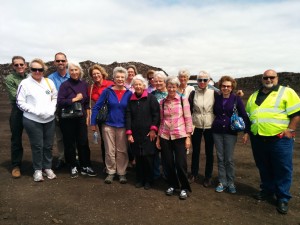
League members and Republic Services staff
Information provided by the Piedmont League of Women Voters
Emphasis added.


